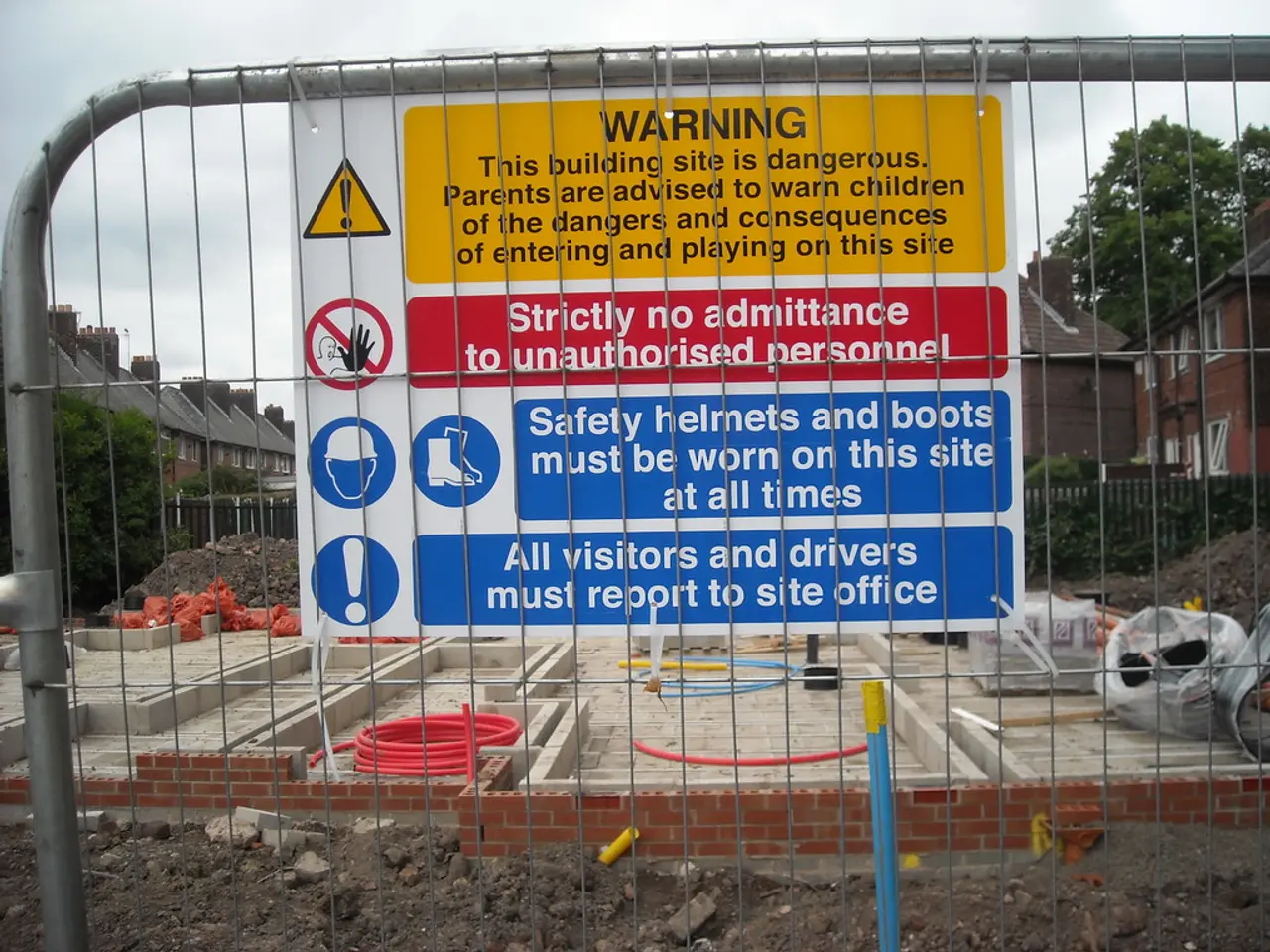United Kingdom to Initialize Carbon Eliminations in Carbon Trading Marketplace
The UK government has announced plans to integrate Greenhouse Gas Removals (GGRs) into its Emissions Trading Scheme (ETS) by the end of 2029[1][2]. This move aims to create a market where emissions are balanced by removal allowances, potentially leading to net zero emissions across the system in the long term.
The integration will provide investment certainty and drive both cost-effective emissions reductions and the scaling up of removals to address residual emissions from hard-to-abate sectors[1][2]. Key aspects of this integration include legislative action to integrate removals by 2028 and operational implementation by 2029, subject to consultations and feasibility assessments[1].
The UK ETS Authority has committed to integrating engineered greenhouse gas removals. While consultation has also considered high-quality nature-based removals, the primary focus is on engineered solutions, which may include technologies such as Carbon Capture and Storage (CCS), Direct Air Capture (DAC), and other engineered mechanical or chemical carbon removal technologies[2].
The scheme will maintain the overall emissions cap while accommodating allowances from GGRs, ensuring incentives to decarbonize alongside removals[1]. To ensure long-term carbon storage durability, a 100-year sequestration requirement similar to other jurisdictions will be established[1]. The scheme will be designed to maintain market integrity, maximize value-for-money for taxpayers, and ensure environmental integrity[1].
Businesses will have the flexibility to decide efficiently between further emissions reductions or purchasing removal allowances to meet compliance[2]. The ETS Authority plans to provide removal auctions to help facilitate a route to market for GGR operators[2]. Companies that are successful in reducing emissions below the cap limit can sell emissions allowances on the secondary market[1].
Removal allowances will only be awarded after carbon sequestration has taken place and been verified[1]. Initially, only removals taking place in the UK will be eligible for the UK ETS[1]. However, the integration does not yet include the integration of high-quality woodland removals, as a decision has not been announced[1].
The launch of a consultation last year was held to integrate removals into the ETS[3]. The consultation response is available for access[3]. The government aims to complete legislation to integrate removals into the ETS by the end of 2028, with the integration to be operational by the end of 2029[1].
Sources: [1] Department for Business, Energy & Industrial Strategy (BEIS). (2022). Greenhouse Gas Removals: Consultation response. [online] Available at: https://www.gov.uk/government/consultations/greenhouse-gas-removals-consultation-response [Accessed 15 March 2023].
[2] Department for Business, Energy & Industrial Strategy (BEIS). (2021). Greenhouse Gas Removals: A consultation on the integration of greenhouse gas removals into the UK Emissions Trading Scheme. [online] Available at: https://www.gov.uk/government/consultations/greenhouse-gas-removals-a-consultation-on-the-integration-of-greenhouse-gas-removals-into-the-uk-emissions-trading-scheme [Accessed 15 March 2023].
[3] Department for Business, Energy & Industrial Strategy (BEIS). (2020). Consultation on the integration of greenhouse gas removals in the UK Emissions Trading Scheme. [online] Available at: https://www.gov.uk/government/consultations/consultation-on-the-integration-of-greenhouse-gas-removals-in-the-uk-emissions-trading-scheme [Accessed 15 March 2023].
- The UK government's plan to integrate Greenhouse Gas Removals (GGRs) into its Emissions Trading Scheme (ETS) by 2029 will primarily focus on engineered solutions derived from environmental-science, such as Carbon Capture and Storage (CCS) and Direct Air Capture (DAC), owing to legislative action initiated in 2028.
- The government's integration of GGRs aims to create an investment climate that drives both cost-effective emissions reductions and the scaling up of removals within the climate-change fighting industry, as the scheme allows businesses the flexibility to decide between further emissions reductions or purchasing removal allowances.
- The successful implementation of the GGR integration into the UK ETS is expected to provide an avenue for finance, making it possible for operators of carbon removal technologies to access removal auctions, thereby helping them penetrate the market and contribute to the energy sector's net zero emissions goal in the long run.




